The map above shows how the African continent was divided in 1914 just before the outbreak of World War I. By this time, European powers controlled 90% of the continent with only Abyssinia (Ethiopia) and Liberia retaining independence.
When war broke out, each of these colonies were not only expected to help their respective European occupier with manpower and raw materials, but many actually became theatres of war in their own right.
The population breakdown by each power was roughly as follows:
- Britain had 30% of the continent’s people in its colonies.
- France had 15%.
- Portugal had 11%.
- Germany had 9%.
- Belgium had 7%.
- Italy had 1%.
Yet, the Scramble for Africa was still a relatively recent phenomenon for Europeans. As late as 1880, 90% of the continent remained free from European colonial rivalries. It was as close to Europeans in 1914 as the events of 1981 are to us today.
The following map gives a very clear idea of how much had changed in just 30 years:
Thus, the start of the “Great War” in 1914, would have tragic consequences not only for European societies but also for the people forced to help the war efforts of the very powers that denied them their freedom.
You can learn more about Africa in World War 1 and the Scramble for Africa from the following books:
- Tip and Run: The Untold Tragedy of the Great War in Africa
- The First World War in Africa
- The Scramble For Africa
- King Leopold’s Ghost: A story of greed, terror and heroism
Have any comments about either map? Please leave them below:
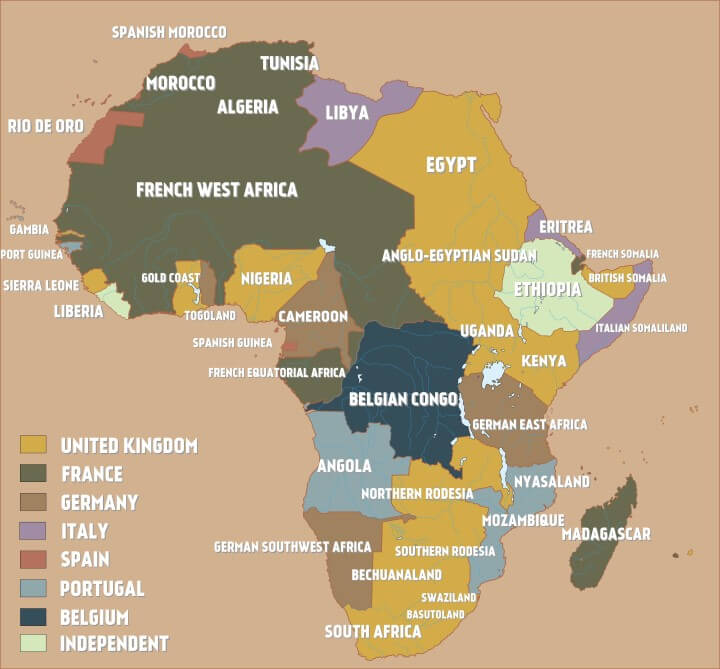
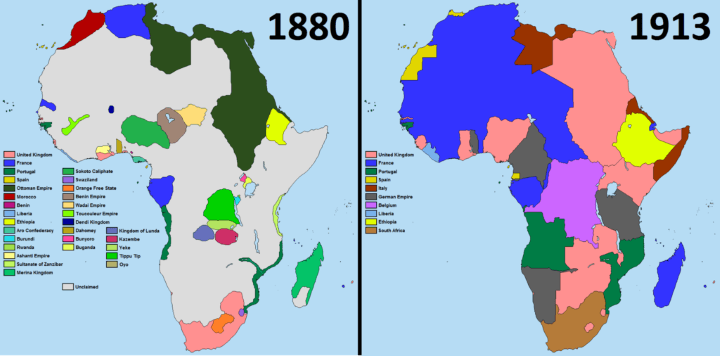
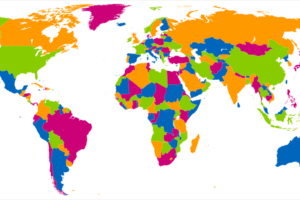
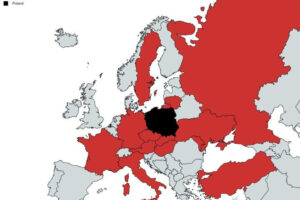
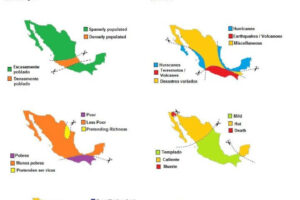
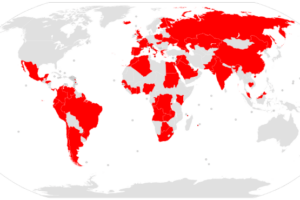
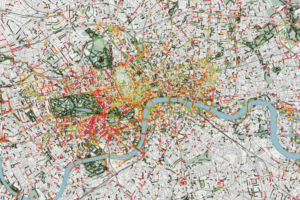
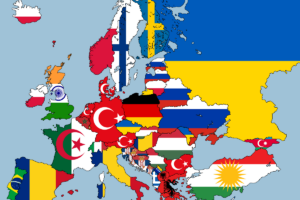
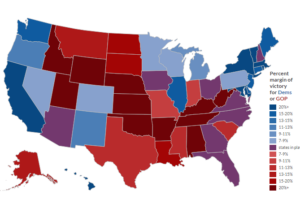
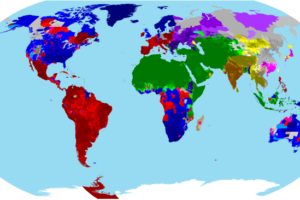
Hello says
The 1880 map in incorrect. 1) The Transvaal was an independent native (yes whites can be African natives too) republic under temporary British occupation. 2) The grey parts aren’t “unclaimed”. That’s very Euro-centric. That land still belonged to local tribes, even if certain areas were very underpopulated, nearly deserted.
Andre Engels says
The Transvaal wasn’t just occupied, it was formally annexed, and thus
rightly shown here as British. It does however matter at what date in
1880 you were looking, because on 16 December the South African Republic
declared its independence once more, although it would take until 1884
before this was formally recognized by the UK.
Bobby Fox says
Good maps.but I’d love to know how much real control or even contact Europeans had with most of Africa.I’d say alot of it was paper rule only…
Margot Schenk says
Study some history and you’ll find out there was no paper involved but lots of guns, blood and exploitation.
IDN Live says
Nice article, waiting for you next article
Your mom says
Nice, I found this article really helpful.
J J says
I have read Thomas Packenham’s “The Scramble For Africa” times .It is a very good book, very informative, but heartbreaking in many ways. In it a tribal leader said ” the
gun is the sultan of Africa ” and he was right. Few inroads of conquest were made until
firearms tipped the scale enormously in favor of the Europeans and the Arabs. Slavery
existed in Africa as well as every other continent, but the advent of guns intensified
and facilitated this evil practice to a another level. Europeans were fond of calling
Africans savages, but who were the real savages? And to make matters worse, African
history was downplayed, ignored, lied about, twisted and hidden to help justify the
ravaging of the birthplace of humanity and civilization. Africans are tough, resilient
people and I am amazed at how they have survived and thrived despite the hammering the continent has undergone.
History buff says
So in just 30 years, Europeans managed to bring civilization to a continent that had lacked it for thousands of years. A phenomenally impressive achievement. Thank you for educating people about this.
mike says
More africans and muslims enslaved the continent than Europeans, but it doesn’t fit the narrative, does it?
Not that that, lessens the viciousness and horror of it or it’s affects.
Mike